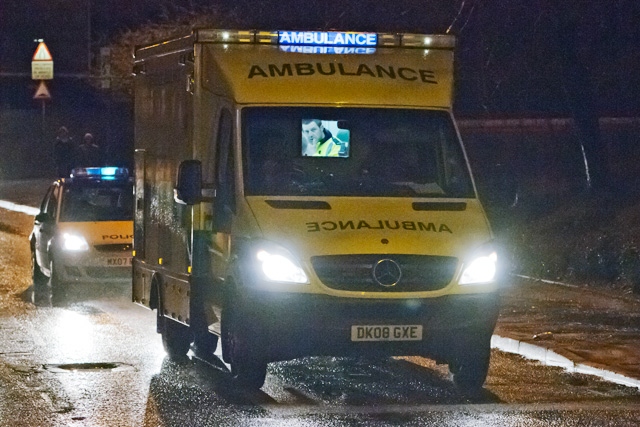Applying traffic rule exemptions helps emergency vehicles reach patients faster
Date published: 16 November 2017

Ambulance
Rapid response (emergency) vehicles can halve the average time it takes to reach a critically injured patient if they apply traffic rule exemptions, which allow them to exceed speed limits, bypass road signs, and pass through red lights, reveals research published online in Emergency Medicine Journal.
On average, these emergency vehicles were able to reduce their response time by 14 minutes thanks to these ‘blue light’ exemptions. This could be a matter of life or death, suggest the researchers.
A rapid response vehicle (RRV) is a car that has been kitted out with all the emergency equipment normally found on a conventional ambulance, but its smaller size enables it to nip through traffic more quickly.
However, driving under blue light exemptions to reach an emergency faster heightens the risk of a road traffic collision, and concerns have been raised as to whether this increased risk can be justified.
To tease out these issues further, the researchers directly compared the response times of vehicles when driven normally with satellite navigation (standard driving); and when the warning lights and sirens were on, a trained navigator was in the car, and blue light exemptions were used (emergency driving).
In all, 40 responses on weekdays and weekends were assessed over a period of eight months in London in 2016.
The distances covered were similar for both types of response, but the average speed for emergency driving was much faster at 46.1km/ hour, compared to 20.1km/hour for standard driving.
The response time was also 14 minutes quicker with emergency driving, equal to a more than halving (just under 55%) of the time it took for standard driving to reach a critically injured person.
The researchers outline some caveats. They only looked at one urban service (London’s Air Ambulance) and geography, road layout, and traffic flow patterns can all influence response times.
“The potential increased risk of an emergency response should only be accepted when it allows a clinically significant time saving for patients who are critically injured or sick,” they emphasise.
“The current study found London’s Air Ambulance RRVs to be significantly quicker when responding with warning lights, sirens and traffic rule exemptions compared with a response being compliant with all traffic signals, road signs and speed limits” they conclude.
Do you have a story for us?
Let us know by emailing news@rochdaleonline.co.uk
All contact will be treated in confidence.
Most Viewed News Stories
- 1Drugs and cash seized during morning raids at suspected stash houses
- 2Ogden family announces intention to invest £2m in Rochdale AFC
- 3Middleton school hails another outstanding inspection result
- 4Man convicted after police car filmed driving dangerously in Kirkholt
- 5Former councillor and hospital campaigner Jean Ashworth has died
To contact the Rochdale Online news desk, email news@rochdaleonline.co.uk or visit our news submission page.
To get the latest news on your desktop or mobile, follow Rochdale Online on Twitter and Facebook.


